In this practice guideline
Flags, armorial bearings, state emblems etc
This document provides guidelines on whether relative grounds exist for refusing registration of a trade mark. In particular, this page concerns the relative grounds for refusal stipulated in sections 27-30 of the Trade Marks Act 2002. These Guidelines do not constrain the judgment and discretion of the Commissioner of Trade Marks, and each application will be considered on its own merits.
1. Introduction
Subpart 3 of Part 2 of the Trade Marks Act 2002 (“the Act”) contains the relative grounds for not registering a trade mark, and incorporates sections 22 to 30 of the Act. These Guidelines focus on the registrability of a trade mark under sections 27-30 of the Act.
Under section 27(1) of the Act, the Commissioner may require that the applicant obtain the written consent of the person who appears to the Commissioner to be entitled to consent to the registration and use of a sign as a trade mark where the sign includes a representation of a flag, armorial bearing, insignia, orders of chivalry, or decorations of any entity.
Section 27(1) of the Act does not apply where sections 28 or 29 of the Act apply.
Section 28 of the Act prohibits the registration of a trade mark where the trade mark contains a representation of the flag, armorial bearing or state emblem and official sign or hallmark of convention countries. 1
Section 29 of the Act prohibits the registration of a trade mark where the trade mark contains armorial bearings, flags or other emblems of international intergovernmental organisations of which one or more convention countries are members. The armorial bearing, flag, or other emblem, or the abbreviation or name of the international organisation concerned is protected under the Paris Convention or the TRIPS Agreement, unless the Commissioner considers that its use:
- is not likely to suggest that a connection exists between the organisation and the trade mark; or
- is not likely to mislead the public as to the existence of a connection between the user and the organisation
Section 30 of the Act states that protection under the Paris Convention or the TRIPS Agreement for the purposes of sections 28 and 29, only extends where:
- the country or the organisation concerned has notified New Zealand in accordance with Article 6ter (3) of the Paris Convention 2 , or under that Article as applied by the TRIPS Agreement, that it desires to protect the state emblem, official sign, or hallmark, or the emblem, abbreviation, or name of that country or organisation, as the case may be; and
- the notification remains in force; and
- New Zealand has not objected to it in accordance with Article 6ter (4) of the Paris Convention 3 , or under that Article as applied by the TRIPS Agreement, or any such objection has been withdrawn.
2. Flags, armorial bearings, insignia, orders of chivalry or decorations generally
Section 27(1) of the Act states:
If a person applies for registration of a sign as a trade mark and the sign includes a representation of the flag, armorial bearing, insignia, orders of chivalry, or decorations of any entity, the Commissioner may require that the applicant obtain the written consent of the person who appears to the Commissioner to be entitled to consent to the registration and use of the sign as a trade mark.
Under section 27 of the Act, where a trade mark application includes a representation of a flag, armorial bearing, insignia, orders of chivalry, or decorations of any entity, the Commissioner may require the applicant to obtain written consent to the registration and use of the flag, armorial bearing, insignia, order of chivalry, or decoration concerned, from the person or entity to which the emblem belongs.
This section of the Act principally refers to the flags of self-governing territories or states that are not parties to the Paris Convention, coats of arms of towns, cities, or non-international inter-governmental organisations, and decorations, such as the insignia of honours and awards. 4
Section 27 of the Act does not apply where sections 28 or 29 of the Act apply. 5
Below are examples of flags of non-convention entities, armorial bearings (Coats of Arms), insignia, orders of chivalry, and decorations.
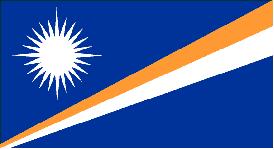 Flag of the Marshall Island |
 Flag of the State of Hawaii |
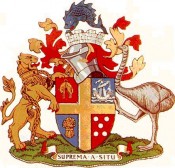 Coat of Arms of the City of Wellington |
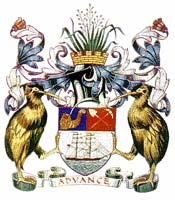 Coat of Arms of the City of Auckland |
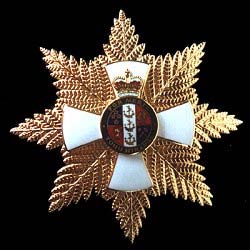 Insignia of the New Zealand Order of Merit |
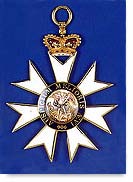 Insignia of the Order of St Michael and St George |
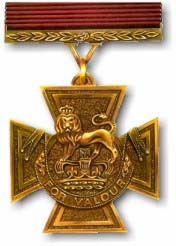 Victoria Cross |
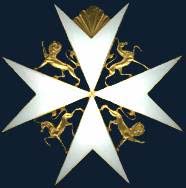 Insignia of the Order of St John |
2.1 Consent
Where a trade mark application contains a representation of a flag, armorial bearing, insignia, orders of chivalry, or decorations of any entity, the Examiner will raise a concern under section 27(1) of the Act and request the applicant to provide consent to the use of the emblem from the appropriate authority.
Where an applicant has obtained consent, the applicant must forward the consent document to IPONZ.
The consent document must:
- clearly identify the mark applied for, and include the representation of the material to which the consent relates;
- relate to the registration, not just use, of the mark applied for;
- clearly identify the goods and services;
- cover all of the goods and services applied for;
- be submitted on official letter-head or carry the seal of the person or entity giving the consent; and
- be an original document, or a copy thereof.
Upon receipt of a letter of consent, the Examiner must check that:
- the person or entity supplying the consent is the person or entity to which the flag, armorial bearing, insignia, order of chivalry, or decoration belongs; and
- the consent document includes all of the necessary information, as outlined above.
If the person or entity which owns the flag, armorial bearing, insignia, order of chivalry, or decoration consents to the registration of the applicant’s mark, but in respect of a narrower specification of goods or services than that originally applied for, then the applicant must request a limitation of the specification, pursuant to section 37(1) of the Act, so that the specification includes only those goods or services for which consent was granted.
3. Flags, state emblems of convention countries
Section 28 of the Act states:
The Commissioner must not, without the authorisation of the competent authorities of the country concerned, register a trade mark that contains a representation of---
a) the flag of a convention country unless the Commissioner considers that the use of the flag in the manner proposed is permitted without that authorisation; or
b) the armorial bearings or any other State emblem of a convention country that is protected under the Paris Convention or the TRIPS Agreement; or
c) an official sign or hallmark---
(i) adopted by a convention country; and
(ii) that indicates control and warranty in relation to goods or services of the same, or similar, kind as those goods or services in relation to which the trade mark is to be registered; and
(iii) that is protected under the Paris Convention or the TRIPS Agreement.
3.1 Flags of convention countries
Section 28(a) of the Act prohibits the registration of marks that contain representations of the flag of a convention country 6 , without the authorisation of the relevant authority.
Section 28(a) allows the Commissioner discretion in registering marks containing flags where the Commissioner is satisfied that use of the flag in the manner proposed is permitted without that authorisation.
Where the mark in question consists solely of the flag of the convention country, the Examiner will request authorisation from the relevant authority.
Where the mark in question contains the flag of the convention country as part of the mark, the Examiner will consider the matter on a case-by-case basis.
For example, the mark will be considered in relation to the goods or services applied for. People may be influenced to purchase goods or a service because they appear to originate from the country whose flag is contained in the mark.
 Flag of the United Kingdom |
3.2 Armorial bearings or other state emblems of convention countries
Section 28(b) of the Act prohibits the registration of marks that contain representations of armorial bearings or any other State emblem of a convention country 7 protected under the Paris Convention or the TRIPS Agreement, without the authorisation of the relevant authority.
Armorial bearings and other state emblems of convention countries will only receive protection if New Zealand has been notified by the World Intellectual Property Organisation (“WIPO”) in accordance with the procedures set out in section 30.
8
3.3 Official signs or hallmarks
Section 28(c) of the Act prohibits the registration of marks that contain representations of an official sign or hallmark adopted by a convention country that is protected under the Paris Convention or the TRIPS Agreement and indicates control and warranty in relation to goods or services of the same, or similar, kind as those goods or services in relation to which the trade mark is to be registered, without the authorisation of the relevant authority. For example:
 |
Official signs or hallmarks only receive protection if New Zealand has been notified by WIPO in accordance with the procedures set out in section 30. 9
3.4 Consent
Where a trade mark application contains a representation of a flag, armorial bearing, state emblem, or an official sign or hallmark, of a convention country, 10 the Examiner will raise a concern under section 28 of the Act and request that the applicant provide consent to the use of the emblem from the appropriate authority.
Where an applicant has obtained consent, the applicant must forward the consent document to IPONZ.
The consent document must:
- clearly identify the mark applied for, and include the representation of the material to which the consent relates;
- relate to the registration, not just use, of the mark applied for;
- clearly identify the goods and services;
- cover all of the goods and services applied for;
- be submitted on official letterhead or carry the seal of the competent authority of the country concerned giving the consent; and
- be an original document, or a certified copy thereof.
Upon receipt of a letter of consent, the Examiner must check that:
- the authority of the country providing consent is the appropriate authority of the country to which the flag, armorial bearing, state emblem, or official sign or hallmark, belongs; and
- the consent document includes all of the necessary information, as outlined above.
If the country which owns the flag, armorial bearing, state emblem, or official sign or hallmark, consents to the registration of the applicant’s mark, but in respect of a narrower specification of goods or services than that originally applied for, then the applicant must request a limitation of the specification, pursuant to section 37(1) of the Act, so that the specification includes only those goods or services listed in the consent document.
4. Armorial bearings, flags, emblems and names of international organisations
Section 29(1) of the Act states that:
The Commissioner must not, without the authorisation of the international organisation concerned, register a trade mark that contains a representation of the armorial bearing, flag, or other emblem, or the abbreviation or name, of an international intergovernmental organisation of which 1 or more convention countries are members if the armorial bearing, flag, or other emblem, or the abbreviation or name, of the international organisation concerned is protected under the Paris Convention or the TRIPS Agreement.
Section 29(1) of the Act prohibits the registration of marks that contain representations of an armorial bearing, flag, or other emblem, or the abbreviation or name, of an international intergovernmental organisation, without the authorisation of the relevant international intergovernmental organisation where:
- one or more convention countries are members of the international intergovernmental organisation; and
- the armorial bearing, flag, or other emblem, or the abbreviation or name, of the international intergovernmental organisation concerned is protected under the Paris Convention or the TRIPS Agreement.
The Examiner must check that:
- the international organisation has more than one convention country as a member; and
- the abbreviation or name, of the international organisation concerned is protected under the Paris Convention or the TRIPS Agreement.
Armorial bearings, flags, or other emblems, or abbreviations or names, of an international intergovernmental organisation will only receive protection if New Zealand has been notified by WIPO in accordance with the procedures set out in section 30. 11
Such organisations would include, for example, the United Nations, The World Health Organisation, and UNESCO.
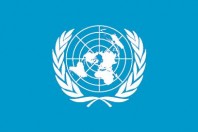 Emblem of the United Nations |
 Emblem and seal of the World Health Organisation |
 Emblem of UNESCO |
 Emblem of the World Bank |
4.1 Consent
Where a trade mark application contains a representation of an armorial bearing, flag, or other emblem, or the abbreviation or name, of an international intergovernmental organisation, the Examiner will raise a concern under section 29(1) of the Act and request the applicant to provide consent to the use of the emblem from the appropriate international organisation.
Where an applicant has obtained consent, the applicant must forward the consent document to IPONZ.
The consent document must:
- clearly identify the mark applied for, and include the representation of the material to which the consent relates;
- relate to the registration, not just use, of the mark applied for;
- clearly identify the goods and services;
- cover all of the goods and services applied for;
- be submitted on official letterhead or carry the seal of the international organisation giving the consent; and
- be an original document, or a certified copy thereof.
Upon receipt of a letter of consent, the Examiner must check that:
- the international organisation supplying the consent is the international organisation to which the armorial bearing, flag, or other emblem, or the abbreviation or name belongs; and
- the consent document includes all of the necessary information, as outlined above.
If the international organisation which owns the armorial bearing, flag, or other emblem, or the abbreviation or name, consents to the registration of the applicant’s mark, but in respect of a narrower specification of goods or services than that originally applied for, then the applicant must request a limitation of the specification, pursuant to section 37(1) of the Act, so that the specification includes only those goods or services for which consent has been given.
4.2 Connection between organisation and trade mark
The provisions of this section have a similar effect to those in section 28, but the Commissioner has discretion to allow registration without the authorisation of the relevant official. Section 29(2) of the Act states that:
Despite subsection (1), the Commissioner may register a trade mark if the Commissioner considers that the use of the armorial bearing, flag, or other emblem, or the abbreviation or name, of the international organisation concerned in the manner proposed---
a) is not likely to suggest to the public that a connection exists between the organisation and the trade mark; or
b) is not likely to mislead the public as to the existence of a connection between the user and the organisation.
Therefore, under section 29(2) the Commissioner may register a trade mark if the Commissioner considers that the use of the armorial bearing, flag or other emblem, or the name or abbreviation of the name, of the international organisation concerned-
- is not likely to suggest that a connection exists between the organisation and the trade mark; or
- is not likely to mislead the public as to the existence of a connection between the user and the organisation.
Where the mark in question consists solely of the name or emblem of an international intergovernmental organisation, the applicant will be required to provide authorisation from the relevant organisation.
Authorisation to register a mark that includes a flag, emblem, name or abbreviation of a name of an intergovernmental organisation may not be required if, for example, the goods or services to be covered by the application are such that the public would be unlikely to associate the mark with the organisation to which the emblem relates.
Where the international intergovernmental organisation is only well known in relation to a particular area of activity, the connection between the mark and the organisation may be less apparent. In such cases the examiner should carefully consider the relationship between the goods or services in the specification and the area of reputation of the organisation that appears in the trade mark. Each case must be considered on its merits.
5. Notification under the Paris convention or TRIPS agreement
Section 30 of the Act states:
For the purposes of sections 28 and 29, the State emblems (other than the national flag) of, or the official signs or hallmarks adopted by, a convention country, or the emblems, abbreviations, or names, of an international organisation, as the case may be, are protected under the Paris Convention or the TRIPS Agreement only if, or to the extent that, ---
a) the country or the organisation concerned has notified New Zealand in accordance with Article 6ter (3) of the Paris Convention, or under that Article as applied by the TRIPS Agreement, that it desires to protect the State emblem, official sign, or hallmark, or the emblem, abbreviation, or name, as the case may be; and
b) the notification remains in force; and
c) New Zealand has not objected to it in accordance with Article 6ter (4) of the Paris Convention, or under that Article as applied by the TRIPS Agreement, or any such objection has been withdrawn.
Section 30 of the Act implements Article 6ter of the Paris Convention which is concerned with protection for national or state emblems of Convention countries and with emblems of certain international organisations.
The World Intellectual Property Organisation (WIPO) as per Article 6ter of the Paris Convention notifies New Zealand and other member states of any armorial bearings, flags, state emblems, official signs and hallmarks, abbreviations and names to be protected. New Zealand has to take all steps necessary to prevent trade mark registration for those “representations”.
When received, the notified " representations" are entered into the IPONZ database as a ‘protected’ mark and appear in any trade mark search result.
If a trade mark is found which is the same as or deceptively similar to the trade mark being searched a concern will be raised under section 28 or 29 of the Act.
However, with regard to state emblems, or the official signs or hallmarks adopted by a convention country, or the emblems, abbreviations, or names of international organisations, these are protected under the Paris Convention or TRIPS Agreement, only to the extent that:
- the country or organisation concerned has notified New Zealand that it wishes to protect the state emblem, official sign or hallmark or the abbreviation, or name, as the case may be; and
- the notification remains in force; and
- New Zealand has not objected to it in accordance with Article 6ter of the Paris Convention, or under that Article as applied to the TRIPS Agreement, and that any such objection has been withdrawn.
Please note that as the Flags, Names and Emblems Protection Act 1981 protects certain other flags, words and emblems, IPONZ may also raise a concern under section 17 of the Act, (i.e. the registration of the trade mark being ‘contrary to law’) regarding the registrability of marks that include flags, names and emblems of organisations.
6. Annexures
A. Paris convention for the protection of industrial property
Of March 20, 1883, as revised at Brussels on December 14, 1900, at Washington on June 2, 1911, at The Hague on November 6, 1925, at London on June 2, 1934, at Lisbon on October 31, 1958, and at Stockholm on July 14, 1967
Article 6ter
-
(1) (a) The countries of the Union agree to refuse or to invalidate the registration, and to prohibit by appropriate measures the use, without authorisation by the competent authorities, either as trademarks or as elements of trademarks, of armorial bearings, flags, and other State emblems, of the countries of the Union, official signs and hallmarks indicating control and warranty adopted by them, and any imitation from a heraldic point of view.
(b) The provisions of subparagraph (a), above, shall apply equally to armorial bearings, flags, other emblems, abbreviations, and names, of international intergovernmental organisations of which one or more countries of the Union are members, with the exception of armorial bearings, flags, other emblems, abbreviations, and names, that are already the subject of international agreements in force, intended to ensure their protection.
(c) No country of the Union shall be required to apply the provisions of subparagraph (b), above, to the prejudice of the owners of rights acquired in good faith before the entry into force, in that country, of this Convention. The countries of the Union shall not be required to apply the said provisions when the use or registration referred to in subparagraph (a), above, is not of such a nature as to suggest to the public that a connection exists between the organisation concerned and the armorial bearings, flags, emblems, abbreviations, and names, or if such use or registration is probably not of such a nature as to mislead the public as to the existence of a connection between the user and the organisation. -
Prohibition of the use of official signs and hallmarks indicating control and warranty shall apply solely in cases where the marks in which they are incorporated are intended to be used on goods of the same or a similar kind.
-
(a) For the application of these provisions, the countries of the Union agree to communicate reciprocally, through the intermediary of the International Bureau, the list of State emblems, and official signs and hallmarks indicating control and warranty, which they desire, or may hereafter desire, to place wholly or within certain limits under the protection of this Article, and all subsequent modifications of such list. Each country of the Union shall in due course make available to the public the lists so communicated.
Nevertheless such communication is not obligatory in respect of flags of States.
(b) The provisions of subparagraph (b) of paragraph (1) of this Article shall apply only to such armorial bearings, flags, other emblems, abbreviations, and names, of international intergovernmental organisations as the latter have communicated to the countries of the Union through the intermediary of the International Bureau. -
Any country of the Union may, within a period of twelve months from the receipt of the notification, transmit its objections, if any, through the intermediary of the International Bureau, to the country or international intergovernmental organisation concerned.
-
In the case of State flags, the measures prescribed by paragraph (1), above, shall apply solely to marks registered after November 6, 1925.
-
In the case of State emblems other than flags, and of official signs and hallmarks of the countries of the Union, and in the case of armorial bearings, flags, other emblems, abbreviations, and names, of international intergovernmental organisations, these provisions shall apply only to marks registered more than two months after receipt of the communication provided for in paragraph (3), above.
-
In cases of bad faith, the countries shall have the right to cancel even those marks incorporating State emblems, signs, and hallmarks, which were registered before November 6, 1925.
-
Nationals of any country who are authorized to make use of the State emblems, signs, and hallmarks, of their country may use them even if they are similar to those of another country.
-
The countries of the Union undertake to prohibit the unauthorized use in trade of the State armorial bearings of the other countries of the Union, when the use is of such a nature as to be misleading as to the origin of the goods.
-
The above provisions shall not prevent the countries from exercising the right given in paragraph (3) of Article 6quinquies, Section B, to refuse or to invalidate the registration of marks incorporating, without authorisation, armorial bearings, flags, other State emblems, or official signs and hallmarks adopted by a country of the Union, as well as the distinctive signs of international intergovernmental organisations referred to in paragraph (1), above.
B. Convention countries
B. Convention Countries
|
Albania |
Lithuania |
|
Algeria |
Luxembourg |
|
Angola |
Macau, China |
|
Antigua and Barbuda |
Macedonia, (Former Yugoslav Republic of) |
|
Argentina |
Madagascar |
|
Armenia |
Malawi |
|
Australia (and Norfolk Island) |
Malaysia |
|
Austria |
Maldives |
|
Azerbaijan |
Mali |
|
Bahamas |
Malta |
|
Bahrain |
Mauritania |
|
Bangladesh |
Mauritius |
|
Barbados |
Mexico |
|
Belarus |
Moldova, Republic of |
|
Belgium |
Monaco |
|
Belize |
Mongolia |
|
Benin |
Morocco |
|
Bolivia |
Mozambique |
|
Bosnia and Herzegovina |
Myanmar (Burma) |
|
Botswana |
Namibia |
|
Brazil |
Netherlands (and Netherlands Antilles and Aruba |
|
Brunei Darussalam |
Nicaragua |
|
Bulgaria |
Niger |
|
Burkina Faso |
Nigeria |
|
Burundi |
Norway |
|
Cambodia |
Oman |
|
Cameroon |
Pakistan |
|
Canada |
Panama |
|
Central African Republic |
Papua New Guinea |
|
Chad |
Paraguay |
|
Chile |
Peru |
|
China |
Philippines |
|
Colombia |
Poland |
|
Congo |
Portugal (including the Azores and Madeira) |
|
Congo, (Democratic Republic of) |
Qatar |
|
Costa Rica |
Romania |
|
Cote d'Ivoire (Ivory Coast) |
Russian Federation |
|
Croatia |
Rwanda |
|
Cuba |
Saint Kitts and Nevis |
|
Cyprus |
Saint Lucia |
|
Czech Republic |
Saint Vincent and the Grenadines |
|
Denmark (and Faroe Islands) |
San Marino |
|
Djibouti |
Sao Tome and Principe |
|
Dominica |
Senegal |
|
Dominican Republic |
Sierra Leone |
|
Egypt, (Arab Republic of) |
Singapore |
|
El Salvador |
Slovak Republic |
|
Ecuador |
Slovenia |
|
Equatorial Guinea |
Solomon Islands |
|
Estonia |
South Africa |
|
European Community |
Spain (and colonies) |
|
Fiji |
Sri Lanka |
|
Finland |
Sudan |
|
France (including all overseas departments and territories) |
Suriname |
|
Gabon |
Swaziland |
|
Gambia |
Sweden |
|
Georgia |
Switzerland |
|
Germany |
Syrian Arab Republic |
|
Ghana |
Taiwan |
|
Greece |
Tajikistan |
|
Grenada |
Tanzania, United Republic of |
|
Guatemala |
Thailand |
|
Guinea |
Togo |
|
Guinea-Bissau |
Trinidad and Tobago |
|
Guyana |
Tunisia |
|
Haiti |
Turkey |
|
Holy See (Vatican City) |
Turkmenistan |
|
Honduras |
Uganda |
|
Hong Kong, China |
Ukraine |
|
Hungary |
United Arab Emirates |
|
Iceland |
United Kingdom (and the Isle of Man) |
|
India |
United States of America (and all territories and possessions of the United States, including Puerto Rico) |
|
Indonesia |
Uruguay |
|
Iran (Islamic Republic of) |
Uzebekistan |
|
Iraq |
Venezuela |
|
Ireland |
Vietnam |
|
Israel |
Zambia |
|
Italy |
Zimbabwe |
|
Jamaica |
|
|
Japan |
|
|
Jordan |
|
|
Kazakhstan |
|
|
Kenya |
|
|
Korea, (Democratic People's Republic of) |
|
|
Korea, Republic of |
|
|
Kuwait |
|
|
Kyrgyzstan, (Republic of) |
|
|
Lao (People's Democratic Republic) |
|
|
Latvia |
|
|
Lebanon |
|
|
Lesotho |
|
|
Liberia |
|
|
Libyan Arab Jamahiriya |
|
|
Liechtenstein |
Last updated 16 November 2009
Footnotes
- 1 See Annexure ‘B’ for a list of convention countries.
- 2 See Annexure “A” for a copy of Article 6ter of the Paris Convention for the Protection of Industrial Property.
- 3 As above.
- 4 IPONZ does not keep copies of the flags of states or territories, coats of arms, and emblems of towns and cities, or of public authorities and institutions in New Zealand, nor of Orders of Chivalry, because of the difficulty of obtaining and maintaining such material.
- 5 See section 27(2) of the Trade Marks Act 2002.
- 6 See Annexure ‘B’ for a list of convention countries.
- 7 See n6 above.
- 8 See Notification Under The Paris Convention or Trips Agreement below.
- 9 See Notification Under The Paris Convention or Trips Agreement below.
- 10 See n6 above.
- 11 See Notification Under The Paris Convention or Trips Agreement below.
